
"Packaging is a waste, after all. By cutting packaging materials, we can reduce the environmental load of a product. We must figure out how to protect each product with a minimal amount of material." These words, spoken by my boss, Mr. Okazaki,* opened my eyes to the fun of my job as a package designer. For example, the Warmlet (warm toilet seat) packaging uses a double layer at the bottom so that cushioning is unnecessary. The inspiration for this hit me when I was looking at a paper package for eggs in which the shape of the packaging itself works as cushioning.

Cardboard cushioning that was used for the packaging of the Warmlet (heated toilet seat). The packaging team's challenge was to eliminate it.

The part that replaced the cushioning is assembled with a double-layered bottom. The sizes and angles are precisely calculated.
However, there is a limit to which we can enlarge the inner layer at the bottom of a carton. Even if I want to enlarge it just a few millimeters, it is impossible. There is a reason why I kept sticking to creating a simple package, even when developing it is a real tough struggle: I want to make easily wrappable packaging. A complicated packaging process or additional cushioning causes trouble for the people who wrap the product. The folding process of the "cushioning-free" package has only 20 stages, which is far less than the 52 stages for a conventional package. This means that the time necessary for assembling it is 21 seconds per piece, so about 70 hours in total per month can be reduced for the entire package assembling line.
This package also reduced the resources required to make it by 50%, and has been lauded both in Japan and overseas, but I was even more happy to hear that people on the assembling line like it very much.
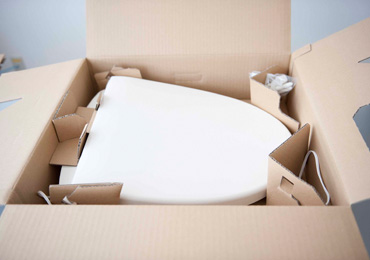
The new packaging system is a single box.
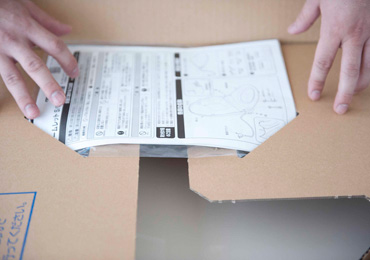
The installation manual is placed under the upper lid, a development that reduces the installer's burden.
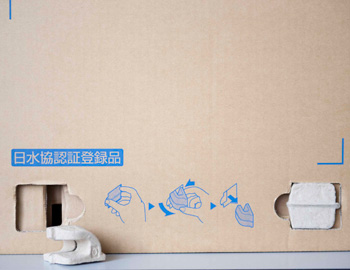
joints can be pulled out in a single action.
The packaging for the washlet with a water tank is another example. Formerly, the product had to be pulled out of the package, so many installers damaged their back. Then, Mr. Okazaki devised an innovative package - just by removing the paper joints, the package itself can be pulled away from the top and the product remains. This joint system package has been patented and drastically reduces the back pain of installers. We were assigned to improve it recently, so we cut the two-process action of twisting and pulling the joint out to just one action. In addition, by improving the way accessories are stored in the box, we have gotten rid of the action of taking them out. At a site where hundreds of toilets are installed, this one action causes a big burden for installers.
We conducted unannounced inspections to measure vibration and shock during transportation dozens of times.
We wondered if installers would allow such a big product to tumble sideways or head-first, and discovered that no such incidences had occurred. Therefore, we focused on strengthening the bottom of the package and in the process, were able to reduce material usage by 48% and weight by nearly 2kg.
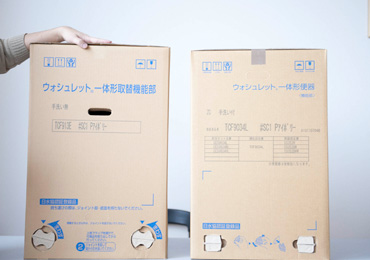
The old and new versions of the packaging for the Washlet with a tank look the same, but…
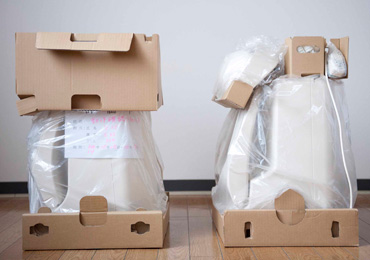
if you pull out the box from above, you see an obvious difference! The new version on the right has much less cushioning.
Thus, coming up with new ideas is essential in package design, and a designer's character is clearly shown in the design. Although packaging design is a background job, we should consider the needs of others in our designs, and we can make many people happy. By reducing packaging waste, we can help reduce CO2 emissions. As you can see, the world of packaging design is really profound. My dream is to spread the know-how we have created in Japan to the world.
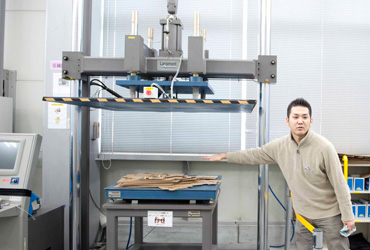
Only a few companies have machinery for conducting packaging tests internally.
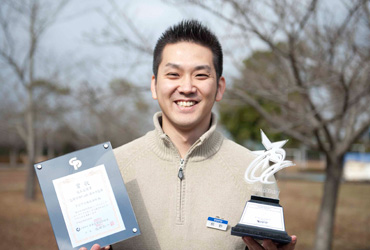
Toto received awards at the Japan Packaging Contest for the 13th consecutive year.
Yoshikazu Okazaki, a senior engineer and experienced packaging design with a career of more than 25 years. His unparalleled devotion to improving package designs by eliminating waste in conventional packaging was introduced on NHK's popular TV program "Professional: The Way of Work."












